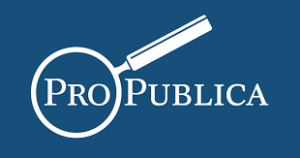
By Caroline Chen
ProPublica (6/26/18)
Nuplazid, a drug for hallucinations and delusions associated with Parkinson’s disease, failed two clinical trials. In a third trial, under a revised standard for measuring its effect, it showed minimal benefit. Overall, more patients died or had serious side effects on Nuplazid than after receiving no treatment.
Patients on Uloric, a gout drug, suffered more heart attacks, strokes and heart failure in two out of three trials than did their counterparts on standard or no medication.
Nevertheless, the U.S. Food and Drug Administration approved both of these drugs — with a deadly aftermath. Uloric’s manufacturer reported last November that patients on the drug were 34 percent more likely to die from heart disease than people taking an alternative gout medication. And since the FDA fast-tracked approval of Nuplazid and it went on the market in 2016 at a price of $24,000 a year, there have been 6,800 reports of adverse events for patients on the drug, including 887 deaths as of this past March 31.
The FDA is increasingly green-lighting expensive drugs despite dangerous or little-known side effects and inconclusive evidence that they curb or cure disease. Once widely assailed for moving slowly, today the FDA reviews and approves drugs faster than any other regulatory agency in the world. Between 2011 and 2015, the FDA reviewed new drug applications more than 60 days faster on average than did the European Medicines Agency.
“You know who never shows up at the [advisory committee]? The people who died in the trial. Nobody is talking for them.” — Former FDA staffer, who asked not to be named because he still works in the field.
Europe has also rejected drugs for which the FDA accelerated approval, such as Folotyn, which treats a rare form of blood cancer. European authorities cited “insufficient” evidence of health gains from Folotyn, which shrinks some tumors but hasn’t been shown to extend lives. It costs more than $92,000 for a seven-week course of treatment, according to research firm SSR Health.
Reaping a windfall
As patients (or their insurers) shell out tens or hundreds of thousands of dollars for unproven drugs, manufacturers reap a windfall. For them, expedited approval can mean not only sped-up sales but also — if the drug is intended to treat a rare disease or serve a neglected population — FDA incentives worth hundreds of millions of dollars.
“Instead of a regulator and a regulated industry, we now have a partnership,” said Dr. Michael Carome, director of the health research group for the nonprofit advocacy organization Public Citizen, and a former U.S. Department of Health and Human Services official. “That relationship has tilted the agency away from a public health perspective to an industry friendly perspective.”
While the FDA over the past three decades has implemented at least four major routes to faster approvals — the current commissioner, Dr. Scott Gottlieb, is easing even more drugs’ path to market. The FDA okayed 46 “novel” drugs — whose chemical structure hadn’t been previously approved — in 2017, the most in at least 15 years. At the same time, it’s rejecting fewer medications. In 2017, the FDA’s Center for Drug Evaluation and Research denied 19.7 percent of all applications for new drugs, biologics, and efficacy supplements, down from a 2010 peak of 59.2 percent, according to agency data.
President Trump has encouraged Gottlieb to give patients faster access to drugs. “You’re bringing that down, right?” Trump asked the commissioner at a May 30 event, referring to the time it takes to bring drugs to market. “You have a lot of good things in the wings that, frankly, if you moved them up, a lot of people would have a great shot.”
Faster reviews mean that the FDA often approves drugs despite limited information. It channels more and more experimental treatments, including Nuplazid, into expedited reviews that require only one clinical trial to show a benefit to patients, instead of the traditional two. …

